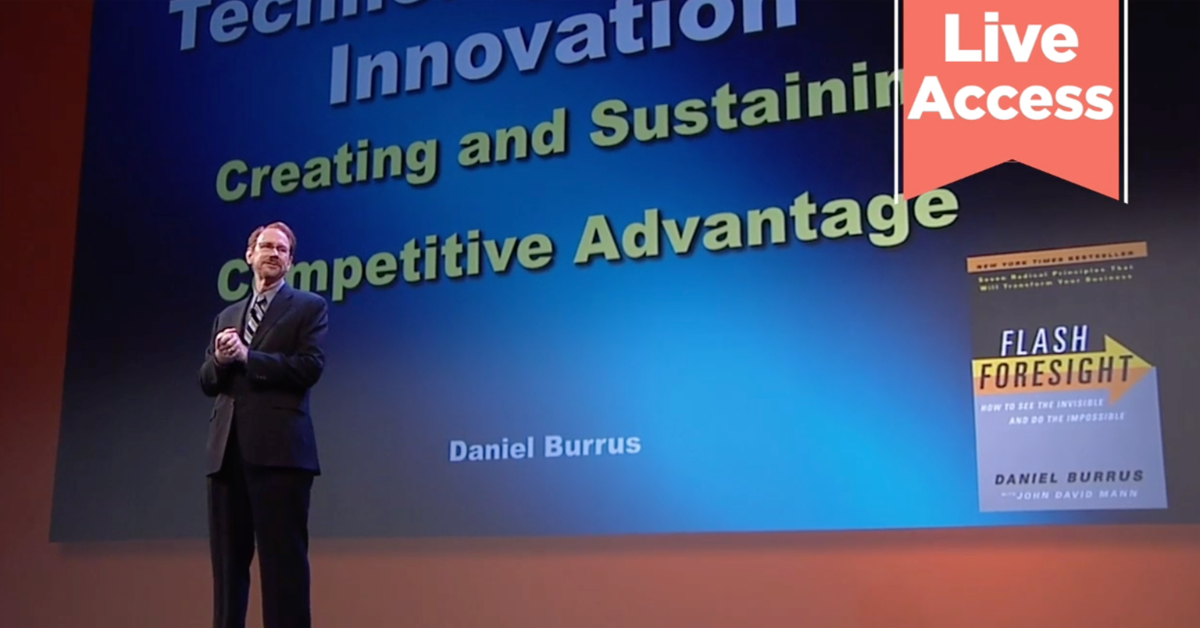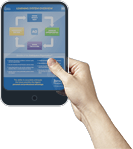Since the early ’80s, I’ve been tracking Three Digital Accelerators—processing/computing power, storage, and bandwidth—as the key drivers of digital innovation. These accelerators have consistently advanced our technological capabilities, reshaping industries and society.
Each leap forward creates new opportunities and challenges, making digital disruption inevitable—a Hard Trend we must anticipate and prepare for.
Today, artificial intelligence (AI), machine learning, and automation are embedded in every aspect of life, from AI chatbots providing 24/7 customer support to online learning platforms educating students globally. Yet, not all technological changes have been positive. Innovations have also brought challenges like job displacement, privacy concerns, and cybersecurity threats.
How can we navigate this rapid transformation? The answer lies in adopting an Anticipatory Mindset. Recognizing Hard Trends—inevitable future facts—empowers us to prepare for and harness technology’s potential while mitigating its risks.
Let’s explore the dual impact of technology on society and how leaders can position themselves strategically for a brighter future.
Is Technology Improving Society or Creating New Challenges?
One of technology’s most profound effects is instant connectivity, enabling individuals and businesses to interact across distances, time zones, and cultures in real-time. Tools like Zoom, Microsoft Teams, and WhatsApp have redefined collaboration across industries and geographies.
Key Benefits of Technological Connectivity:
- Remote work: Distributed teams now operate seamlessly across industries.
- Virtual education: Learning platforms provide global access to education, empowering students to pursue degrees or learn new skills anywhere.
- Global communication: Social media platforms transcend traditional boundaries, enabling real-time idea exchange.
However, with increased connectivity comes a demand for transparency. As businesses operate more openly online, consumers now expect greater accountability and ethical practices around sustainability, corporate responsibility, and social impact.
This shift is a Hard Trend—companies that fail to meet these standards risk losing trust and damaging their reputations. To thrive, leaders must embrace transparent communication and demonstrate ethical behavior in this interconnected world.

How Can Society Balance Productivity Gains with Job Security?
Technology has revolutionized productivity, allowing businesses to achieve more with fewer resources. Innovations like automation and AI have drastically improved efficiency, reducing costs and accelerating workflows.
Examples of Transformative Technology in Action:
- 3D Printing in Healthcare: Orthodontists create custom dental implants faster and more affordably, redefining diagnostics.
- 3D Printing in Manufacturing: Car makers reduce material waste and production costs by printing components on demand.
Yet, technological advancements also raise concerns about job displacement. Workers worry that automation and AI might replace human jobs, creating economic uncertainty.
The solution lies in reframing the narrative. By adopting an Anticipatory Mindset, we recognize that technology doesn’t eliminate work—it transforms it. Routine tasks will be automated, allowing people to focus on higher-level activities like innovation and strategy.
The Future of Work:
- In healthcare, AI-powered diagnostics free doctors to focus on complex cases and personalized care.
- Upskilling employees in critical thinking, emotional intelligence, and technological literacy ensures workers remain relevant in a digital-first economy.
Humans empowered by AI will outperform those who don’t leverage it, creating exciting opportunities in evolving industries.

What Are the Cybersecurity Risks of Technology?
As technology advances, cybersecurity risks grow more sophisticated. Our reliance on interconnected systems—smart home devices, cloud services, and IoT—has increased vulnerabilities to cyberattacks.
Key Cybersecurity Challenges:
- Ransomware attacks: These target individuals and organizations, holding critical data hostage.
- Cloud vulnerabilities: Sensitive information is exposed when security measures are insufficient.
This is a Hard Trend—cybercriminals will continue developing more advanced methods to exploit technology. As digital reliance deepens, organizations must anticipate threats and strengthen their defenses.

How Can We Prepare for the Future of Cybersecurity?
To combat the negative impacts of technology on society, leaders must shift from reactive measures to proactive cybersecurity strategies.
Top Strategies for Strengthening Cybersecurity:
- Adopt predictive tools: AI-powered systems monitor and identify network vulnerabilities in real time.
- Use multi-factor authentication (MFA): Adding extra layers of security reduces unauthorized access.
- Educate employees: Regular training minimizes human error, the most common cybersecurity vulnerability.
Proactive leaders protect their organizations from future attacks while maintaining trust with customers and stakeholders.

How Can Technological Innovations Shape a Better Future for Society?
The impact of technology isn’t inherently good or bad; it’s how we use it that determines its effects. Leaders must adopt strategic anticipation to leverage technology’s potential while addressing its risks.
Steps to Maximize Positive Impact:
- Embrace innovation cautiously: Encourage adoption while remaining vigilant about potential challenges.
- Revolutionize education: Equip the workforce with future-ready skills to succeed in the jobs of tomorrow.
- Promote ethical practices: Transparency builds trust with consumers in an interconnected world.
- Prioritize cybersecurity: Strengthen systems to protect critical data and infrastructure.

Are You Ready to Lead Society into a Future Powered by Technology?
Technology will continue to drive exponential change across industries, reshaping society in profound ways. Yet, the future doesn’t just happen to us—it’s something we shape proactively.
By recognizing Hard Trends and adopting an Anticipatory Mindset, leaders can transform disruption into opportunity and guide society toward a brighter, more innovative future.
What steps will you take today to prepare for tomorrow? The future is coming fast—are you ready to lead?
Get Ahead of the Future with Daniel Burrus
Want to dive deeper into the future of technology? Discover Daniel Burrus’ Top 25 Technology Trend Predictions for 2025 and learn how to position yourself for success.
Visit www.burrus.com/seethefuture to access these invaluable insights and stay ahead of the curve!







